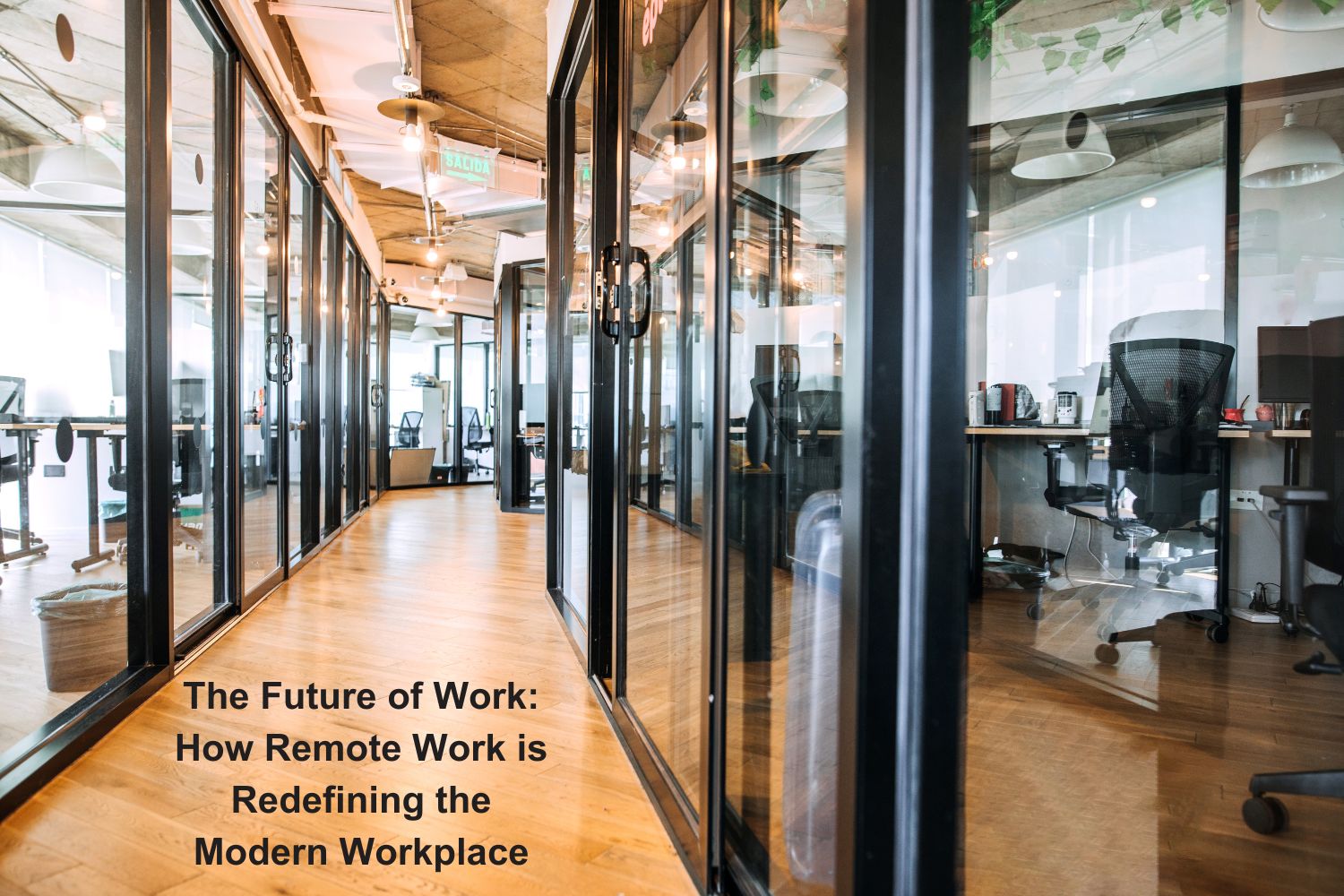
The traditional office environment, once considered the cornerstone of professional life, is undergoing a dramatic transformation. The rise of remote work, accelerated by global events and evolving technological advancements, is redefining the modern workplace. This shift is not just about where we work but also how we work, collaborate, and envision our careers. In this blog, we’ll explore the profound impact of remote work on the future of work and what it means for employees and employers alike.
The Remote Work Revolution: A New Era Begins
Remote work has been around for decades, but it was often seen as a perk for a select few or a necessity in exceptional circumstances. However, the COVID-19 pandemic acted as a catalyst, pushing remote work into the mainstream. What was once a temporary solution has now become a permanent fixture for many organizations and employees. As we move forward, understanding how this shift is reshaping the workplace is crucial.
Key Changes in the Modern Workplace
- Flexible Work Arrangements
- Hybrid Models: Many companies are adopting hybrid work models, combining remote and in-office work. This approach offers flexibility, allowing employees to split their time between home and the office based on their needs and preferences.
- Asynchronous Work: Remote work has popularized asynchronous communication, where team members work on their own schedules and collaborate through digital tools rather than coordinating across time zones.
- Digital Transformation
- Collaboration Tools: The proliferation of digital tools like Zoom, Slack, and Microsoft Teams has facilitated remote collaboration. These platforms have become integral to daily operations, enabling seamless communication and project management.
- Cloud Computing: Cloud-based solutions allow employees to access files and applications from anywhere, making remote work more feasible and efficient.
- Redefined Work-Life Balance
- Personalization of Schedules: Remote work has empowered employees to tailor their work schedules to fit their personal lives, leading to improved work-life balance and job satisfaction.
- Elimination of Commute: The absence of a daily commute saves time and reduces stress, contributing to better mental and physical well-being.
Opportunities Created by Remote Work
- Talent Pool Expansion
- Global Hiring: Remote work enables organizations to tap into a global talent pool, allowing them to hire the best candidates regardless of their location. This diversity can lead to more innovative solutions and perspectives.
- Inclusivity: Remote work can accommodate various needs, such as those of individuals with disabilities or those who require flexible hours, promoting a more inclusive workforce.
- Increased Productivity
- Focus and Efficiency: Many employees report increased productivity when working remotely, citing fewer distractions and a more personalized work environment.
- Autonomy and Trust: Remote work often comes with increased autonomy, fostering a culture of trust and accountability.
- Cost Savings
- Reduced Overheads: Organizations can save on costs related to office space, utilities, and other facilities by adopting remote work or hybrid models.
- Employee Savings: Employees save on commuting costs, work attire, and daily meals, contributing to their overall financial well-being.
Challenges and Considerations
- Maintaining Company Culture
- Engagement and Connection: Building and maintaining a strong company culture can be challenging in a remote environment. Companies need to find creative ways to foster team spirit and keep employees engaged.
- Onboarding and Training: Effective onboarding and training processes must be adapted for remote settings to ensure new hires integrate smoothly and acquire necessary skills.
- Communication Barriers
- Over-Reliance on Technology: Remote work relies heavily on digital communication tools, which can sometimes lead to misunderstandings or miscommunications. Clear protocols and regular check-ins are essential.
- Isolation and Loneliness: Remote work can sometimes lead to feelings of isolation or disconnection. Employers need to provide support and create opportunities for virtual social interaction.
- Work-Life Boundaries
- Blurring Lines: The boundary between work and personal life can become blurred when working from home. Setting clear boundaries and creating dedicated workspaces can help manage this challenge.
The Road Ahead: Embracing the Future
As we look to the future, remote work will continue to shape the modern workplace. To navigate this evolving landscape successfully, both employers and employees need to adapt and innovate. Key areas to focus on include:
- Hybrid Work Policies: Developing clear and flexible hybrid work policies that balance remote and in-office requirements.
- Employee Well-Being: Prioritizing mental health and well-being through support systems and resources tailored to remote work.
- Technology Investments: Investing in reliable technology and infrastructure to support remote work and ensure smooth operations.
Conclusion
The future of work is here, and it is increasingly remote. As we embrace this shift, we must recognize the opportunities it presents while addressing the challenges it brings. By fostering a flexible, inclusive, and well-supported work environment, we can harness the full potential of remote work and build a modern workplace that benefits everyone.
Stay tuned for more insights on how evolving work trends are shaping our professional lives and how you can adapt to thrive in this new era.


Leave a Reply